SEARCH






|
|
|
|


Nature as a category is of course a very broad subject. In fact, every living species belongs to nature. And so do landscapes, natural phenomena like thunder and lightning, the galaxy, northern lights and so do many others.
If I have to limit myself to a few aspects of the untamed nature, here they are:
Flower power / A rainbow in black and white / Hunters and the hunted / The birds / Funny stories / The underwater world
I didn't include macro photos of butterflies, frogs, flies and other creatures in my list. Of course these all belong to nature and they are to be seen on some gorgeous photographs.
However, when looking at these photos I often wonder about their authenticity. Were they made without manipulation? Were the little creatures allowed to creep around freely when photographed, or were they captured and placed in a surrounding that suited the photographer?
I can't answer these questions if they are not addressed by the photographers in their description. However I think it would be best to be open about the making of the photo, as did Florentin Vinogradof in the tutorials for his beautiful photos like "The Hunter" and "Morimus Funereus".
Flower power
It is not easy to make an original photo of a flower. Before you know it you have made a beautiful photo for a catalogue. There is nothing wrong with it. It has its merits, but it is missing that something, that extra that touches the viewer, when the photograph starts to communicate with you, telling a story.
You'll find the crocus at many places: In the Alps, in meadows, open spaces in the woods and many others. It is a lovely little flower. Often soft coloured. Sometimes very shy, hardly opening its leaves.
Doris Reindl's “Krokus” is an assertive one; real flower power and letting the world know here I am.
But it is the background that makes this image so special and interesting. Photographers usually look for a calm, smooth background. Doris however choose a background which is a dynamic part of the assertive total. Light stripes are bending along the curves of the flower petals and echo their colours. It gives the impression that something exciting is going on.
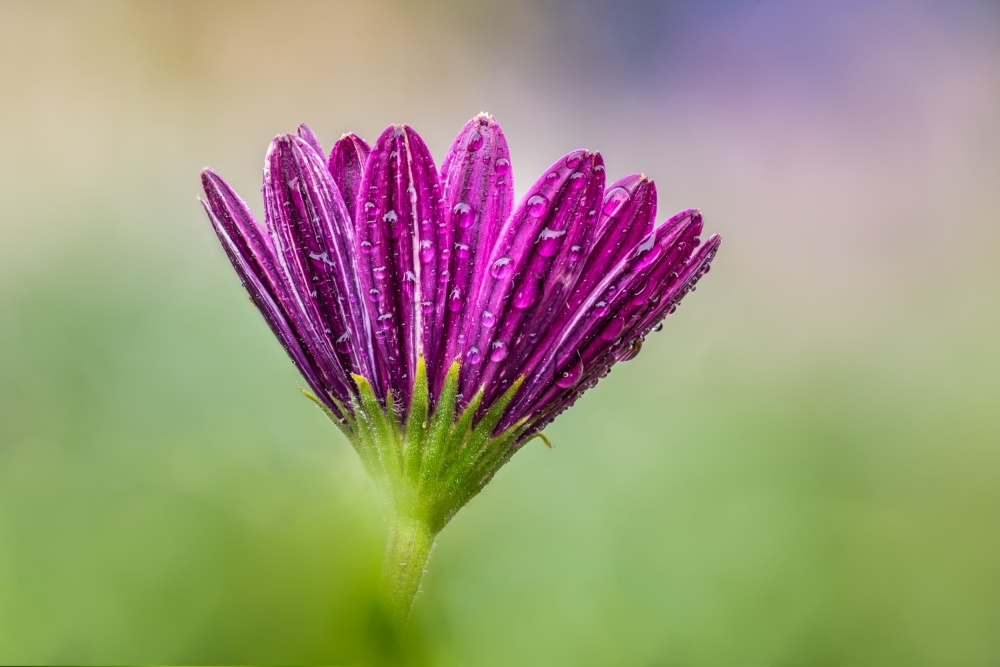 "Beauty in drench" by Sandipan Biswas
"Beauty in drench" by Sandipan Biswas
Sandipan Biswas opted for the smooth background recommended in many online tutorials on flower photography. Several shades of green and a touch of purple that matches the color of the flower quite well. To achieve this Sandipan used six shots which were blended in order to create the depth of field he wanted.
The flower with the raindrops is very well photographed. It's sharp, the colours fresh and the droplets enliven the image. It is well done - even when the blur at the left side of the flower stem is slightly disturbing - and yet, the photo doesn't come to life. It doesn't speak to me. Perhaps that's because it is rather static and without drama.
Judging by the title "Beauty in drench", I did expect something different than a beautifully recorded flower with droplets. I imagined a soaked brave little flower standing “in drench” out in the rain. The lovely smooth background of the photo however doesn't suggest it is raining, nor do the scattered droplets on the flower petals.
It is of course very possible that the photographer had no other objective in mind than showing us the beauty of the flower and its droplets against a smooth background. In that case he has done a good job, and it may not have been his goal to show us a more dramatic interpretation of this theme.
A rainbow in black and white
The world of nature is a colourful one and that is how most photographers show it. Far fewer use black and white to reveal its intensity and mood in a rainbow of just grey tones, however often full of poetry.
As an example I have chosen one of Anne Rose Pretorius’ photographs, whose poetic flower photos are inspired by Georgia o' Keeffe. Georgia O' Keeffe once said about her flower paintings, that she painted what the flower was to her. She wanted to show the essence, the soul of the flower. And so does Anne Rose. She does it in a poetic, atmospheric way, strong and yet delicate. As for me, I keep on viewing this image, breathing in its wonderful mood.
My other example of that rainbow of grey tones is a photograph by Stefan Eisele.
His photographic approach to a flower is quite different from Anne Rose's. If I had to explain this in a literary way, I would say: Anne Rose writes a poem, Stefan writes a short story.
He creates his story in powerful contrasts. Almost white and almost black and some shades of grey. You could almost think of absurd prose. Bare and hard, and yet the whole is a story about fragility - the fragility of life.
Hunters and the hunted
When I was preparing for this review, I reviewed many wildlife photographs that had been published on 1X Photography.
I noticed that particularly the endearing moments in the life of wild animals were photographed. Big cats - or other animals - in love with their mate or caring for their cups, resting or other situations. All very peaceful scenes.
There are but a few photographers - Massimo Mei, Morkel Erasmus and Jeffrey Wu - who dare to show another determinant of wild animal life, which of cause is the essential struggle or hunt for food and the moment of killing.
People think it is a cruel act. But is it? Aren't we imposing our moral standards - which we have developed and mastered with difficulty and pain - on the animals?
The question is a very interesting one, and I would love to pursue it, but it would take up all the space I have to discuss Jeffrey Wu's photo.
The action is frozen, but the photo is not a static one. It is full of drama. Look at the eyes of the cheetahs and those of the impala. The fierce concentration in the eyes of the jumping cheetahs, the existential fear, the panic in the impala's expression. Except for being taken at the right moment, it's the eyes that make this photo so strong.
I cannot resist showing you another photo by Jeffrey Wu called "Cheetah Hunting".
Here the action is in full swing – as shown by the cloud of whirling sand. Quite spectacular. The background of this excellent photograph is as interesting as the action itself. In a transparent curtain of dust we see three Thomson gazelles running away from the scene to safety. It's nature in all its purity. That's how it is, the law of the savannah.
I don't know whether this beautiful photo was taken while the wildebeests were hunted by a group of big cats, or that they were migrating to other pastures. Actually, it is of no real importance.
It is an almost abstract photo and yet showing us the characteristic features of wildebeests. But there is more to it. It is a very suggestive image. The composition makes you feel as being part of the running herd, that is being moved forward by the dominant wildebeest to the left. And while none of the wildebessts is shown in its total, you get the impression that large numbers are passing by at high speed, suggested by the motion blur. A clever piece of work!
The birds
I have seen some wonderful bird photographs here at 1X and at exhibitions of various photo clubs. No matter how beautiful the pictures were, at one point they could not fascinate me anymore. They looked so much alike. Bird lovers will probably not agree with me and I hope they can forgive me! What I am trying to say is, that you might look for more original points of view - unless it is your aim to document the species of bird as beautiful as possible. There is nothing wrong with that of course.
To illustrate my point of view, I searched for some different angle to bird photography and came across two lovely images of birds in rather specific poses. Both had a story, were able to tell me something and made me smile.
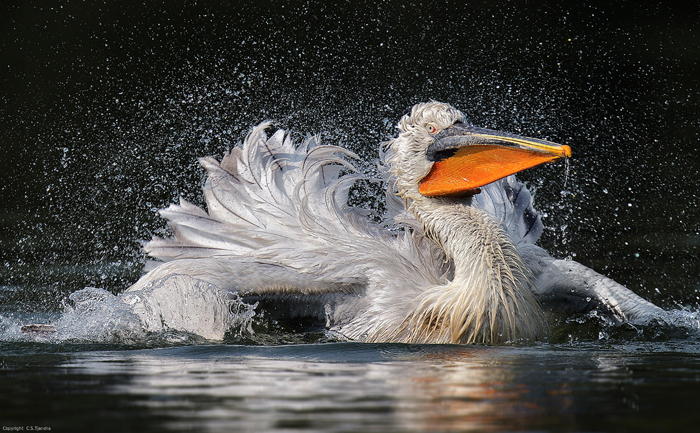 "Wet" by C.S. Tjandra
"Wet" by C.S. Tjandra
The Indonesian photographer C.S. Tjandra made a beautiful series of a bathing pelican. From it I choose "Wet"
He observed the pelican well during the bathing ritual and caught it at a delightful moment. He beats its wings on the water, shaking his feathers from head to toe, his orange throat poach waving happily. All that splashing is like a lovely shower and it appears that the pelican is enjoying himself greatly.
That sense of enjoyment is so strongly caught that you as viewer can enjoy this blissful moment as well.
The incoming razorbill by Fabs Forns is the other photograph and is as unique as Tjandra's pelican.
Landing gear down, flaps up and carefully navigating towards its landing platform with is wings. Ready for landing and for feeding the hungry offspring.
The landing razorbill with its beak full of fish may not look very elegant and thereforreally made me smile.Photographically the moment is caught brilliantly.
Funny stories
According to Giovanni Casini, who photographed "I wish I was a giraffe" in Mana Pool Park in Zimbabwe, it is rare for elephants to stand up to reach a high hanging tasty snack. He caught quite a unique moment - and photographically did a wonderful job. The atmosphere is beautiful, there are lots of interesting details present in the picture and it tells a funny story.
When viewing the photograph, I was reminded of the saying that the grass is always greener at the neighbours. Is that why that elephant is stretching out as far as possible to capture the lush green branch high up, while it is as green on more accessible places?
To get what he wants, the elephant has to work hard. The best branch hangs the highest - and no, he is not a giraffe - and it looks as if he is pushing away the tree. Oh dear, poor thing could be the response of some viewers.
When I saw the photo of these two elephant seals I immediately asked myself from which opera they were singing an aria. There is so much drama in their body language! It seems, there could be also love in the air. Or does the photo show something more down to earth, or better water in thid case? Are they settling a dispute over their territory?
We will never know. And it doesn't matter.
This uncomplicated, funny photo is communicating with us, it evokes all kinds of fantasies.
The underwater world
Although I am not sure whether this Pufferfish was photographed in the deep ocean or in captivity, I will review it because it is such a special fish. Ronni describes it as a poor swimmer, which can escape his pursuers by quickly ingesting huge amounts of water. It then turns - if it were a hedgehog - into a virtually inedible ball several times it’s normal size. Incredible!
The pufferfish is nicely photographed. The hedgehog-like nature of the beast comes all into its own. Funny actually that this aggressive looking little guy has such a soft blue appearance. It obviously makes him stand out well against the dark background. Incidentally, perhaps I would have desaturated the light bright green leaf in the background a bit. Otherwise nothing but praise for this lovely photo.
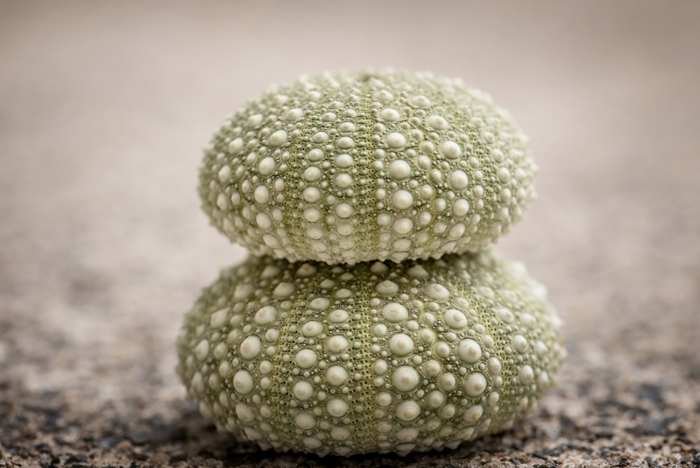 "Two delicate shells" by Jeff Hewson
"Two delicate shells" by Jeff Hewson
Jeff Hewson found these two sea urchin shells on the beach of Orewa, in the North of New Zealand. They are so small that both could almost fit into a match box. He took them home together with some sand from the beach.
In the description to his photo Jeff writes: "I set the shells up on the sand with plenty of blurred background and natural light trying to show how delicate they are. I wanted to show the colours and bumps and tiny holes.
Shells like these are so lovely and Jeff displayed their delicacy, colours and structure so well. It is touching. And yet. The photo would have been so much better if he had given the shells more space at the bottom. Being positioned so close to the lower border the photo is losing some of its visual impact.
 | Write |
 | Lex Molenaar Nice critique! I fully support your vision and admire your respectful wording. |
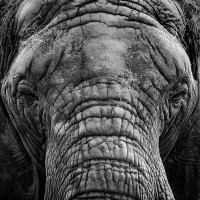 | Giovanni Casini Very nice article, Susanne. And thanks a lot for referring to one of my pictures! :) |
 | Edith Hoffman Great article Susanne, well written and thanks for sharing! :-) |
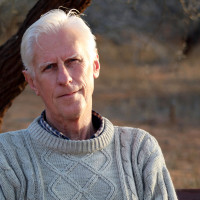 | Christopher Osmond Lovely article, I really enjoyed your "take" on Nature photography and it's something I'll "take" into consideration with my photography in future... |